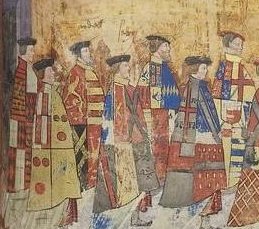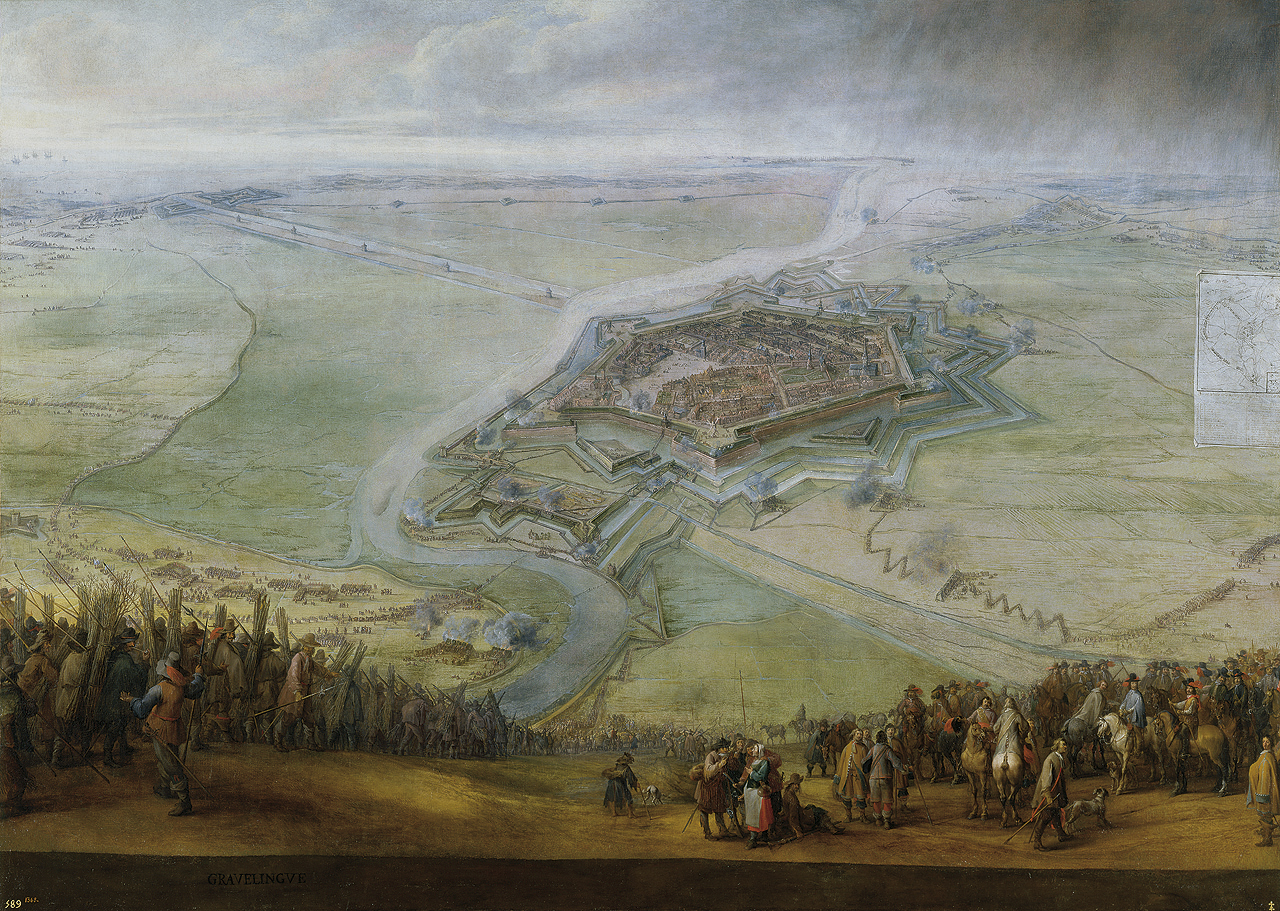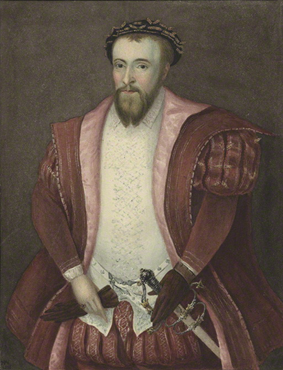|
Gertrude Courtenay, Marchioness Of Exeter
Gertrude Courtenay, Marchioness of Exeter, (''née'' Blount ; c.1499/1502 – 25 September 1558) was an English Marchioness, married to Henry Courtenay, 1st Marquess of Exeter and a member of the court of Henry VIII of England. She was a godmother to the future Elizabeth I. Life Gertrude was the daughter of William Blount, 4th Baron Mountjoy, Katherine of Aragon's chamberlain, and his first wife Elisabeth Saye; she may have had a sister, Mary, who married Henry Bourchier, 2nd Earl of Essex and died in 1555. One of her step-mothers was Inez de Venegas, one of Catherine of Aragon's original Spanish ladies-in-waiting. She married in 1519. Her spouse Henry Courtenay was a close friend of Henry VIII's, having "been brought up of a child with his grace in his chamber." She was one of Queen Catherine of Aragon's attendants at the Field of the Cloth of Gold in 1520. In 1533, Anne Boleyn gave birth to a baby girl. Princess Elizabeth was baptised, and Gertrude, a close friend of Kather ... [...More Info...] [...Related Items...] OR: [Wikipedia] [Google] [Baidu] |
Henry Courtenay, 1st Marquess Of Exeter
Henry Courtenay, 1st Marquess of Exeter, 2nd Earl of Devon (c. 1498 – 9 December 1538), KG, PC, feudal baron of Okehampton, feudal baron of Plympton, of Tiverton Castle, Okehampton Castle and Colcombe Castle all in Devon, was a grandson of King Edward IV, nephew of the queen consort, Elizabeth of York and a first cousin of King Henry VIII. Henry Courtenay was a close friend of Henry VIII, having "been brought up of a child with his grace in his chamber". Origins He was born in about 1498, the first and only surviving son and heir of William Courtenay, 1st Earl of Devon (1475–1511) by his wife Princess Catherine of York (died 1527), the sixth daughter of King Edward IV by his wife Elizabeth Woodville. His maternal first cousins therefore included King Henry VIII. Early life At the time of his birth in 1498, his paternal grandfather Edward Courtenay, 1st Earl of Devon (died 1509) was still living and Henry's father William Courtenay was his eldest son and heir appa ... [...More Info...] [...Related Items...] OR: [Wikipedia] [Google] [Baidu] |
Jane Seymour
Jane Seymour (c. 150824 October 1537) was Queen of England as the third wife of King Henry VIII of England from their marriage on 30 May 1536 until her death the next year. She became queen following the execution of Henry's second wife, Anne Boleyn. She died of postnatal complications less than two weeks after the birth of her only child, the future King Edward VI. She was the only wife of Henry to receive a queen's funeral or to be buried beside him in St George's Chapel, Windsor Castle. Early life Jane, the daughter of Sir John Seymour and Margery Wentworth, was most likely born at Wulfhall, Wiltshire, although West Bower Manor in Somerset has also been suggested. Her birth date is not recorded; various accounts use anywhere from 1504 to 1509, but it is generally estimated around 1508. Through her maternal grandfather, she was a descendant of King Edward III's son Lionel of Antwerp, 1st Duke of Clarence. Because of this, she and King Henry VIII were fifth cousins. She ... [...More Info...] [...Related Items...] OR: [Wikipedia] [Google] [Baidu] |
1558 Deaths
__NOTOC__ Year 1558 ( MDLVIII) was a common year starting on Saturday (link will display the full calendar) of the Julian calendar. Events January–June * January 7 – French troops, led by Francis, Duke of Guise, take Calais, the last continental possession of the Kingdom of England, in the Siege of Calais. * January 22 – The Livonian War begins. * February 2 – The University of Jena is founded in Thuringia, Germany. * February 5 – Arauco War: Pedro de Avendaño, with sixty men, captures Caupolicán (the Mapuche Gran Toqui), who is leading their first revolt against the Spanish Empire (near Antihuala), encamped with a small band of followers. * March 8 – The city of Pori ( sv, Björneborg) was founded by Duke John on the shores of the Gulf of Bothnia. * April 24 – Mary, Queen of Scots, marries Francis, Dauphin of France, at Notre Dame de Paris. July–December * July 13 – Battle of Gravelines: In F ... [...More Info...] [...Related Items...] OR: [Wikipedia] [Google] [Baidu] |
Blount Family
Blount may refer to: People *Blount (surname), surname of English derivation Place names Canada * Blount, Cochrane District, Ontario England * Kingston Blount United States * Blount, Georgia * Blount, West Virginia * Blount County (other) Blount County is the name of two counties in the United States: * Blount County, Alabama * Blount County, Tennessee Blount County is a county located in the East Tennessee Grand Division of the U.S. state of Tennessee. As of the 2020 census ... Companies * Blount, Inc., equipment manufacturing company See also * Blunt (other) {{disambig ... [...More Info...] [...Related Items...] OR: [Wikipedia] [Google] [Baidu] |
Courtenay Family
The House of Courtenay is a medieval noble house, with branches in France, England and the Holy Land. One branch of the Courtenays became a Royal House of the Capetian Dynasty, cousins of the Bourbons and the Valois, and achieved the title of Latin Emperor of Constantinople. Origin The house was founded by Athon, the first lord of Courtenay in France. Athon took advantage of the succession crisis in the Duchy of Burgundy between Otto-William, Duke of Burgundy and King Robert II of France to capture a piece of land for himself, where he established his own seigneury (lordship), taking his surname from the town he founded and fortified. Athon was succeeded by his son Joscelin, who had three sons: Miles, who was Lord of Courtenay after him; Prince Joscelin, who joined the First Crusade and became Count of Edessa; and Geoffrey, who also fought in the Holy Land and died there. In the 12th century, Reginald de Courtenay (d.1190), son of Milo de Courtenay (d.1127), quarre ... [...More Info...] [...Related Items...] OR: [Wikipedia] [Google] [Baidu] |
16th-century English Women
The 16th century begins with the Julian year 1501 ( MDI) and ends with either the Julian or the Gregorian year 1600 ( MDC) (depending on the reckoning used; the Gregorian calendar introduced a lapse of 10 days in October 1582). The 16th century is regarded by historians as the century which saw the rise of Western civilization and the Islamic gunpowder empires. The Renaissance in Italy and Europe saw the emergence of important artists, authors and scientists, and led to the foundation of important subjects which include accounting and political science. Copernicus proposed the heliocentric universe, which was met with strong resistance, and Tycho Brahe refuted the theory of celestial spheres through observational measurement of the 1572 appearance of a Milky Way supernova. These events directly challenged the long-held notion of an immutable universe supported by Ptolemy and Aristotle, and led to major revolutions in astronomy and science. Galileo Galilei became a champion o ... [...More Info...] [...Related Items...] OR: [Wikipedia] [Google] [Baidu] |
Daughters Of Barons
A daughter is a female offspring; a girl or a woman in relation to her parents. Daughterhood is the state of being someone's daughter. The male counterpart is a son. Analogously the name is used in several areas to show relations between groups or elements. From biological perspective, a daughter is a first degree relative. The word daughter also has several other connotations attached to it, one of these being used in reference to a female descendant or consanguinity. It can also be used as a term of endearment coming from an elder. In patriarchal societies, daughters often have different or lesser familial rights than sons. A family may prefer to have sons rather than daughters and subject daughters to female infanticide. In some societies it is the custom for a daughter to be 'sold' to her husband, who must pay a bride price. The reverse of this custom, where the parents pay the husband a sum of money to compensate for the financial burden of the woman and is known as a ... [...More Info...] [...Related Items...] OR: [Wikipedia] [Google] [Baidu] |
English Marchionesses
English usually refers to: * English language * English people English may also refer to: Peoples, culture, and language * ''English'', an adjective for something of, from, or related to England ** English national identity, an identity and common culture ** English language in England, a variant of the English language spoken in England * English languages (other) * English studies, the study of English language and literature * ''English'', an Amish term for non-Amish, regardless of ethnicity Individuals * English (surname), a list of notable people with the surname ''English'' * People with the given name ** English McConnell (1882–1928), Irish footballer ** English Fisher (1928–2011), American boxing coach ** English Gardner (b. 1992), American track and field sprinter Places United States * English, Indiana, a town * English, Kentucky, an unincorporated community * English, Brazoria County, Texas, an unincorporated community * En ... [...More Info...] [...Related Items...] OR: [Wikipedia] [Google] [Baidu] |
Exeter Conspiracy
The Exeter Conspiracy in 1538 was a supposed attempt to overthrow Henry VIII, who had taken control of the Church of England away from the Pope, and replace him with Henry Courtenay, 1st Marquess of Exeter, who was a first cousin of the King. Conspiracy An Act of Attainder was brought against the Marquess of Exeter and he was found guilty of treason by his peers in Westminster Hall, along with other supposed conspirators. Some sources suggest the conspiracy was largely exaggerated by Thomas Cromwell, at this point Vice-Regent, Lord Privy Seal, Principal Secretary and Chancellor of the Exchequer, and Richard Rich, 1st Baron Rich, the protege of Thomas Audley. Victorian historian J. A. Froude, however, writes that the Courtenays were 'petty sovereigns in Devonshire and Cornwall', which may go some way to explaining the true nature of the conspiracy. Yet there is evidence to suggest that Courtenay had the means and intended to muster a rebellion against the King. The charges brou ... [...More Info...] [...Related Items...] OR: [Wikipedia] [Google] [Baidu] |
Tower Of London
The Tower of London, officially His Majesty's Royal Palace and Fortress of the Tower of London, is a historic castle on the north bank of the River Thames in central London. It lies within the London Borough of Tower Hamlets, which is separated from the eastern edge of the square mile of the City of London by the open space known as Tower Hill. It was founded towards the end of 1066 as part of the Norman Conquest. The White Tower, which gives the entire castle its name, was built by William the Conqueror in 1078 and was a resented symbol of oppression, inflicted upon London by the new Norman ruling class. The castle was also used as a prison from 1100 (Ranulf Flambard) until 1952 ( Kray twins), although that was not its primary purpose. A grand palace early in its history, it served as a royal residence. As a whole, the Tower is a complex of several buildings set within two concentric rings of defensive walls and a moat. There were several phases of expansion, mainly ... [...More Info...] [...Related Items...] OR: [Wikipedia] [Google] [Baidu] |
Edward Courtenay, 1st Earl Of Devon
Edward Courtenay, 1st Earl of Devon (c. 1527 – 18 September 1556) was an English nobleman during the rule of the Tudor dynasty. Born into a family with close royal connections, he was at various times considered a possible match for the two daughters of Henry VIII, both of whom became queens regnant of England. He was a second cousin to Edward VI, Mary I and Elizabeth I through King Edward IV. Origins He was the only son of Henry Courtenay, 1st Marquess of Exeter (c.1498–1539) by his second wife, Gertrude Blount, daughter of William Blount, 4th Baron Mountjoy. Edward's paternal grandmother was Princess Catherine of York (1479–1527), a daughter of King Edward IV and thus a sister to King Edward V, a niece to King Richard III, and a sister of Elizabeth of York who was the wife of King Henry VII and the mother of King Henry VIII. Edward Courtenay was thus a first cousin once removed of King Henry VIII and of Queen Margaret of Scotland, and a second cousin to Q ... [...More Info...] [...Related Items...] OR: [Wikipedia] [Google] [Baidu] |
Hampton Court Palace
Hampton Court Palace is a Grade I listed royal palace in the London Borough of Richmond upon Thames, southwest and upstream of central London on the River Thames. The building of the palace began in 1514 for Cardinal Thomas Wolsey, the chief minister of Henry VIII. In 1529, as Wolsey fell from favour, the cardinal gave the palace to the king to check his disgrace. The palace went on to become one of Henry's most favoured residences; soon after acquiring the property, he arranged for it to be enlarged so that it might more easily accommodate his sizeable retinue of courtiers. Along with St James' Palace, it is one of only two surviving palaces out of the many the king owned. The palace is currently in the possession of King Charles III and the Crown. In the following century, King William III's massive rebuilding and expansion work, which was intended to rival the Palace of Versailles, destroyed much of the Tudor palace.Dynes, p. 90. His work ceased in 1694, leaving the pa ... [...More Info...] [...Related Items...] OR: [Wikipedia] [Google] [Baidu] |







